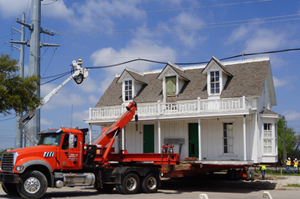There have been hours of discussion on the fate of the Tinsley/Lyles House at City Council and budget meetings and a variety of opinions have been offered. Most have been about whether or not more money should be spent on the house. Some council members expressed that because the house, if renovated, would not bring outside visitors and revenue into the city, no money should be spent. Whether a structure brings outsiders into Garland is not always a way to measure its importance.
Sometimes, it’s OK to think about the importance of something without attaching dollar signs to it. And what is wrong with it being important only to Garland residents? Keep in mind that the original budget request for the maintenance was $75,000. This is a drop in the bucket in a budget that totals more than $700 million. The item has now been shaved down to $20,000 which will go toward conducting a study to determine the cost of restoration.
Contrary to popular opinion, money doesn’t always have to be the driving force behind an action.
Council Member Goebel was correct when she said that a president never slept in the Tinsley/Lyles House. However, the history of the structure proves its significance to this city.
The original owner of the house is in large part responsible for the existence of Garland. If he had not been willing to sell the land where the two railroads cross, Garland would likely not be here. Doesn’t that carry some weight?
It’s difficult to place a price tag on history. But Garland has already destroyed much of the evidence of its past and that places a higher premium on what is left. Knowing their city’s history gives residents a sense of place as well as a sense of pride that they do not otherwise have.
Elementary school children in this city should be taught about the city’s history and be able to see the Tinsley/Lyles House to understand what homes looked like in that era. They will be able to see differences in homes then and now. For example, they can see that construction differs greatly and that people often built onto their homes as their families grew. They can see how instead of homes having hallways, one room led straight into the next. And they can see the difference between using nails and using overlapped wood and wooden pegs. History is better when one can actually SEE it and touch it.
Is it possible that Garland ISD might want to partner with the city so students would be able to look at history firsthand?
It is true that there are people who do not care about Garland’s history and they are opposed to spending money to preserve it. But what if they had been taught about it? What if they had the opportunity to read articles written by city historians and see photos regularly, for example, in ‘The City Press?’ What if their kids had come home from school and told them about this great field trip where they saw a house that was built in the 1800s? People cannot be interested in something unless they know it exists.
In addition, as the younger folks, who typically are less interested, get older, they will come to appreciate the city’s history. Some of it should still be available for them to see.
Council members have discussed that the museum is only open four hours a week but much of Garland doesn’t even know that downtown exists. How would they know a museum is there?
This is not the first time that the city has spent a large sum of money on a structure and then discussed tearing it down. More than one-half million dollars of city money (which belongs to the residents) were spent to buy one downtown structure then tear it down, now you want to get rid of one that money has been spent to move to a new location.
Can we not learn from past mistakes? After losing more than $500,000 on the building on the east side of the square, why are we in this spot again? Why would we spend the money to move the Tinsley/Lyles House and then demolish it?
Also, keep in mind that the “monstrosity money pit,” as it was called in a meeting, might not be important to all of the council members, but there are some taxpayers who do feel that it is important enough to preserve.
The city has owned this house for many years and has done very little to share its significance or to maintain it. It’s time to change that.
This isn’t a money issue or a tourist attraction issue. It is an issue of pride – for the city in which we live, its history and its future. The city is engaged in an image-improving program at this very moment and our history should be a part of that.


